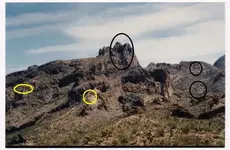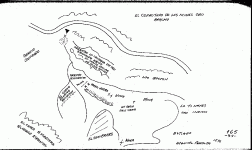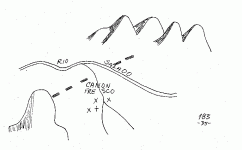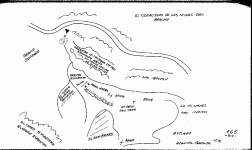Dear Oroblanco;
The Vatican did maintain a fleet of leased ships from at least 857AD until 1870 AD, when the main port of Civitavecchia became a part of Italy. The Papal fleet was most usually a part of the merchant Navy and was overseen by an appointed official from the Vatican.
In reality, the Vatican did phyiscally own some vessels of war, the most notable being the HHFS San Paolo and the HHFS San Pietro, both with 30 guns and both being decomissioned about 1779 AD. As an aside, HHFS stands for His Holy Father's Ship.
With extremely rare exceptions, the Papal fleet plied the trade routes of the Mediterranean and they were used to support the missions at Rhodes, Malta, Crete and Cyprus.
As far as the ports of the New World are concerned, the Papal ships did not attempt an Atlantic crossing until at least the early 1700s, when they dispatched several Papal envoys. Before this time the Vatican relied on Spanish, Portuguese and French commerical and military ships for the bulk of their traffic to and from the New World colonies.
The primary reason why the Papal fleet seldom plied the Atlantic was due to the size of it's ships. The Papal fleet consisted of mainly Mediterranean style cargo galleys which were much better suited for the Med than the rough, inconsistent waters of the open Atlantic.
Your friend;
LAMAR
The Vatican did maintain a fleet of leased ships from at least 857AD until 1870 AD, when the main port of Civitavecchia became a part of Italy. The Papal fleet was most usually a part of the merchant Navy and was overseen by an appointed official from the Vatican.
In reality, the Vatican did phyiscally own some vessels of war, the most notable being the HHFS San Paolo and the HHFS San Pietro, both with 30 guns and both being decomissioned about 1779 AD. As an aside, HHFS stands for His Holy Father's Ship.
With extremely rare exceptions, the Papal fleet plied the trade routes of the Mediterranean and they were used to support the missions at Rhodes, Malta, Crete and Cyprus.
As far as the ports of the New World are concerned, the Papal ships did not attempt an Atlantic crossing until at least the early 1700s, when they dispatched several Papal envoys. Before this time the Vatican relied on Spanish, Portuguese and French commerical and military ships for the bulk of their traffic to and from the New World colonies.
The primary reason why the Papal fleet seldom plied the Atlantic was due to the size of it's ships. The Papal fleet consisted of mainly Mediterranean style cargo galleys which were much better suited for the Med than the rough, inconsistent waters of the open Atlantic.
Your friend;
LAMAR
















